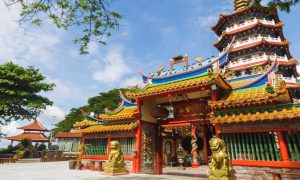The haze condition in the nation has worsened with some areas hitting hazardous Air Pollution Index (API) levels. As of 8.00am today, Banting and Port Klang have hit hazardous API levels of 311 and 358 respectively.
Here’s an overview of how the API levels are interpreted:
- Good: 0-50
- Moderate: 51-100
- Unhealthy: 100-200
- Very Unhealthy: 200-300
- Hazardous: over 300
Port Klang still remains the area with the most dangerous haze level in the country. Yesterday, with an API reading of 233, Port Klang’s haze level was already considered “very unhealthy” prompting the Selangor Education Minister to order for the closure of schools in the area starting from today.
Other areas with unhealthy API levels include Putrajaya (175), Batu Muda (176), Petaling Jaya (185), Shah Alam (164), Port Dickson (169), Nilai (168) and seven other areas. Areas that showed a notable increase in API levels since yesterday evening include Banting, Petaling Jaya and Port Dickson with Banting exhibiting the most drastic increase from only 185 as at 4pm yesterday to 311 as of 8.00am today. However, areas such as Tanjung Malim and Kuala Selangor have recorded slight improvements in API levels.
What’s Causing All This Haze?
In a report in the Department of Environment’s website, the haze this time is believed to be caused by the current drought and the increasing cases of open burning. As a result, the Natural Resources and Environment Minister imposed a ban on open burning in four more states-Negeri Sembilan, Melaka, Kuala Lumpur and Putrajaya, with immediate effect. The ban was previously imposed in Selangor. However, cremation, burning related to religion, grills or barbecues, and gas flaring are not included under the ban.
The haze during this time of the year was unexpected as the haze is usually known to occur in June when the southwest monsoon begins.
Last June, Malaysia was terribly affected by a haze crisis which was a result of extensive open burning that was carried out in its neighbouring country, Indonesia. However, this time around, the haze in several parts of the country is believed to be caused by local sources according to the Malaysian Meteorological Department (MMD) director-general Datuk Che Gayah Ismail
However, it is hoped that the rain which is expected during the intermonsoon period from mid-March to early April would put an end to the drought and in turn, reduce haze levels. Rain intensity is expected to be at its heaviest in April.
Source: Haze Index, NST.com.my


















